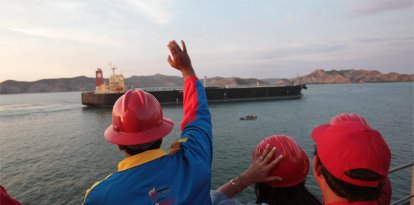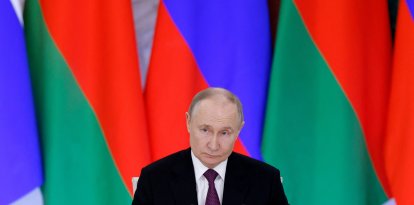How does the intercontinental ballistic missile launched by Russia against Ukraine work?
The missiles can reach targets anywhere on the planet, following a ballistic trajectory.

A Russian Topol-M intercontinental ballistic missile crosses Red Square.
Russia attacked Ukraine with an intercontinental ballistic missile (ICBM) for the first time since the war began in February 2022, according to Kiev. The attack was the Kremlin's response after Kiev launched U.S. ATACMS and British Storm Shadow missiles and after Joe Biden authorized sending anti-personnel mines to Ukraine.
However, that intercontinental missile carried no nuclear warhead, a Ukrainian Army source told AFP.
"An intercontinental ballistic missile was fired from the Russian region of Astrakhan," that source said, while adding that it landed in an area near the city of Dnipro, damaging several infrastructures but not causing any fatalities.
But what is it and how does the missile work?
An intercontinental ballistic missile is a long-range missile designed to carry nuclear, conventional or other types of warheads over extremely long distances, typically exceeding 3,400 miles (5,500 kilometers). These missiles can reach targets anywhere on the planet, following a ballistic trajectory and they are almost impossible to intercept during their flight.
"The RS-26 was first successfully tested in 2012, and is estimated to be 12 meters long and weigh 36 tons, according to the Center for Strategic and International Studies (CSIS). The RS-26 can carry an 800-kg nuclear warhead. It has a 250-meter margin of error with respect to its target, and can reach a speed of Mach 20, about 24,500 kilometers per hour," Infobae reported.
Flight phases:
- Pulse phase: The missile is launched by a propulsion engine that lifts it out of the Earth's atmosphere.
- Medium flight phase: The missile travels through outer space for a brief period, without propulsion.
- Re-entry phase: The missile re-enters the atmosphere and descends toward its target.
- Impact: Finally, the missile detonates, either nuclear or conventional, upon impact with the target.
RECOMMENDATION





















